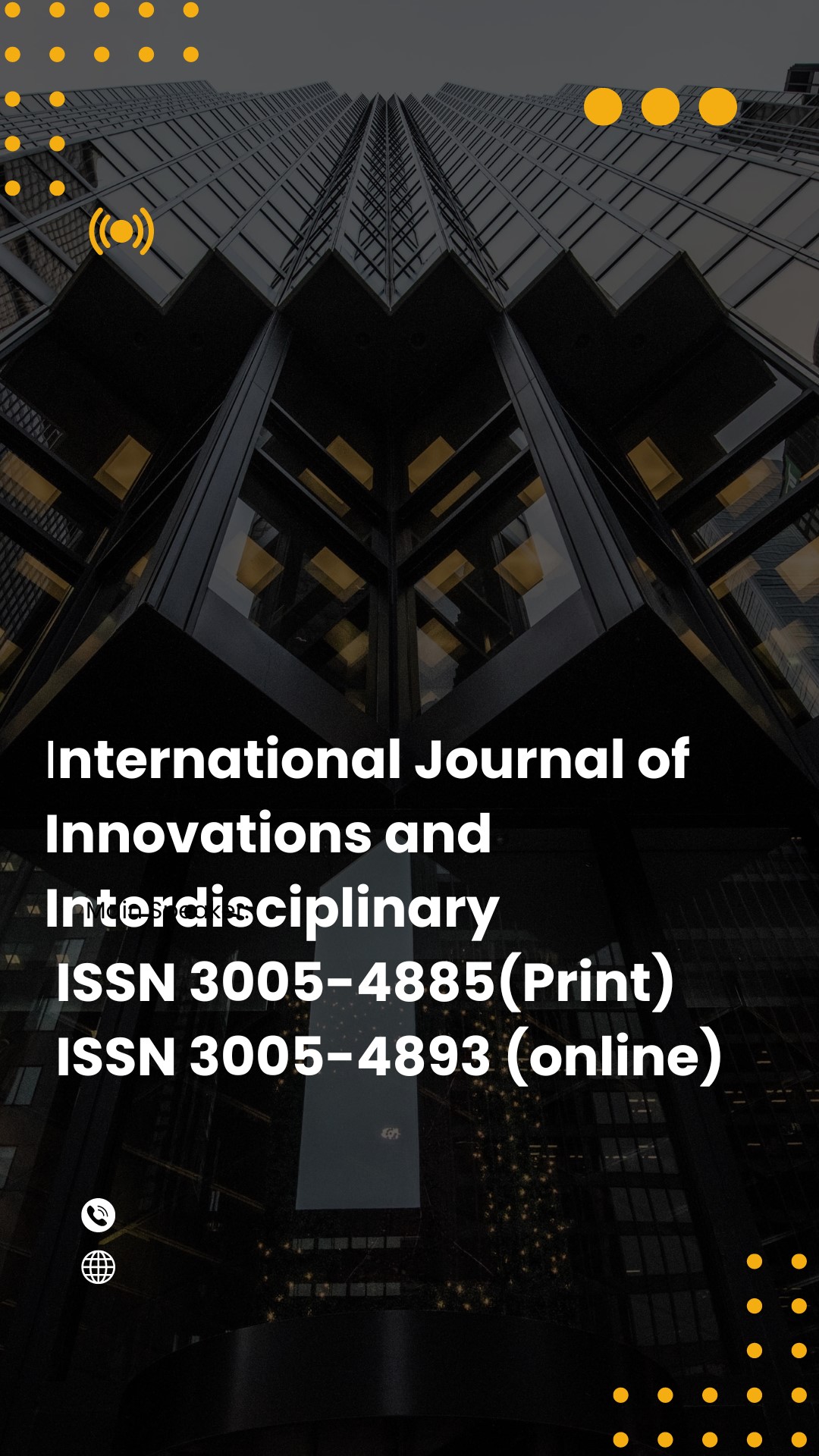Market Risk and Financial Performance of Deposit Taking Micro Finance Banks Kenya
DOI:
https://doi.org/10.61108/ijiir.v3i1.159Keywords:
Market Risk, Bank Size, Financial Performance, Microfinance BanksAbstract
Microfinance banks provide small-scale financial services, including loans, savings, and money transfers, to marginalized communities. However, they face significant credit risk due to unsecured lending and the limited credit history of borrowers. This risk is heightened by rapid technological changes and evolving market conditions, which threaten their financial stability. To maintain profitability, microfinance banks must adopt effective credit risk management strategies to assess and mitigate exposures that could impact their financial performance. Therefore, this study sought to examine how market risk affects the financial performance of deposits-taking microfinance banks in Kenya. The study adopted a positivism research philosophy and a panel data research design. The study's target population was 80 MFIs, of which only 8 deposit taking microfinance banks, were studied, licensed and members of Association of Microfinance Institutions (AMFI) from 2012 to 2021. The study used both descriptive and inferential statistics in the analysis of data with the help of statistical software STATA. The findings indicate that market risk has a positive and significant effect on the financial performance of deposit-taking microfinance banks in Kenya. In addition, bank size has a significant moderating effect on the relationship between market risk and financial performance of Kenya's deposit-taking microfinance banks. The study recommends that Kenya's deposit-taking microfinance banks should implement tailored risk management approaches and continuous monitoring to effectively manage market risk and maintain financial stability. In addition, bank size should be considered when formulating risk management strategies, as it significantly moderates the relationship between financial risks and financial performance.
Downloads
References
Abid. F & Mseddi, S. (2004). The Impact of Operating and Financial Leverages and Intrinsic Business Risk on Firm Value. SSRN Electronic Journal, 20(1), 27–38
Addae-Korankye, A. (2020). Historical Emergence of Microfinance and the Microfinance Sector in Ghana. Business Management Dynamics, 10(2), 1-10.
Addisalem, G. F. (2015). The Influence of Competition on Performance of Microfinance Institutions in Ethiopia. International Journal of Business Ethics in Developing Economies, 7(2), 27-28
Akhtar, M. F., Ali, K., & Sadaqat, S. (2011). Liquidity risk management: a comparative study between conventional and Islamic banks of Pakistan. Interdisciplinary Journal of Research in Business, 1(1), 35-44.
Apere, T. O. (2016). The impact of microfinance banks on economic growth in Nigeria. International Journal of Academic Reserach in Economics and Management Sciences, 5(4), 1-12.
Awojobi, O. (2011). Analysing Risk Management in Banks: Evidence of Bank Efficiency and Macroeconomic Impact. Journal of Money, Investment and Banking, 7(22), 18-23.
Creswell, J. W. (2014). Research Design: Qualitative, Quantitative, and Mixed-Methods Approaches, 1(1), 23-27
Dokulilova, L., Janda, K., & Zetek, P. (2009). Sustainability of microfinance institutions in financial crisis. European Financial and Accounting Journal, 4(2), 7–33.
Fredrick, O. (2012). The impact of credit risk management on financial performance of commercial banks in Kenya. DBA Africa Management Review, 3(1), 22–37.
Gachua, N. F. (2011). The effect of foreign exchange exposure on a Firm’s financial performance. Retrieved from https://repository.kcau.ac.ke
Gatsi, J. G., Gadzo, S. G., & Akoto, R. K. (2013). Degree of Financial and Operating Leverage and Profitability of Insurance Firms in Ghana. International Business and Management, 7(2), 57-65.
Gichura, S. N. (2011). The Determinants of Financial Performance of Microfinance Institutions in Kenya. Retrieved from https://erepository.uonbi.ac.ke.
Kargi, H. S. (2011). Credit Risk and the Performance of Nigerian Banks. Australian journal of business and management research, 2(2), 31-36.
Kithinji, A. M. (2010). Credit risk management and profitability of commercial banks in Kenya. Retrieved from https://erepository.uonbi.ac.ke
Kothari, C. R. (2004). Research Methodology: Methods and Techniques Issues in Informing Science & Information Technology, 6(2), 44-46.
Lang, W. W., & Jagtiani, J. A. (2010). Mortgage and financial crises. Retrieved from http://ssrn.com/abstract=1523519.
Mbubi A. M. (2013). The effect of foreign exchange rates on the financial performance of firms listed at the Nairobi Securities Exchange. Retrieved from https://erepository.uonbi.ac.ke
Muriithi, J. G., Muturi, W. M., & Waweru, K. M. (2016). The effect of market risk on financial performance of commercial banks in Kenya. Retrieved from https://erepository.uonbi.ac.ke
Nimalathasan, B. (2012). Psychological characteristics and its impact on firm performance: A case study of small and medium entrepreneurs in Sri Lanka. ZENITH International Journal of Multidisciplinary Research, 2(12), 36-51.
Ogol, G. O. (2011). Liquidity risk management practices in micro-finance institutions in Kenya. Retrieved from https://erepository.uonbi.ac.ke
Ongore, V. O., & Kusa, G. B. (2013). Determinants of financial performance of commercial banks in Kenya. International journal of economics and financial issues, 3(1), 237-252.
Poulton, C., Kydd, J., & Dorward, A. (2006). Overcoming Market Constraints on Pro‐Poor Agricultural Growth in Sub‐Saharan Africa. Development policy review, 24(3), 243-277.
Runo, F. N. (2013). Relationship between foreign exchange risk and profitability of oil Companies listed in the Nairobi securities exchange. Retrieved from https://erepository.uonbi.ac.ke
Said, R. M. (2014). Net Stable Funding Ratio and Commercial Banks' Profitability. International Proceedings of Economics Development and Research, 76(10), 34-38.
Wachiaya, J. (2011). A survey of market risk management techniques by commercial banks in Kenya and their suitability in mitigating financial loss (Doctoral dissertation, University of Nairobi, Kenya). Retrieved from https://erepository.uonbi.ac.ke
Wangombe, B. G., & Kibati, P. (2019). Influence of capital structure on financial performance of licensed microfinance banks in Kenya. The strategic journal of business & change management, 6(2), 815-835.
Yenesew, A. (2014). Determinants of Financial Performance: a Study on Selected Micro Finance Institutions in Ethiopia. Social Sciences, 8(4), 117-212.
Downloads
Published
How to Cite
Issue
Section
License
Copyright (c) 2025 International Journal of Innovations and Interdisciplinary Research (IJIIR) ISSN 3005-4885 (p);3005-4893(o)

This work is licensed under a Creative Commons Attribution-NonCommercial 4.0 International License.
The International Journal of Innovations and Interdisciplinary Research (IJIIR) adopts the Creative Commons Attribution-NonCommercial 4.0 International (CC BY-NC 4.0) license terms for all published articles. This license governs the rights and permissions associated with the use, distribution, and reproduction of the published content, ensuring a balance between authors' intellectual property rights and the wider dissemination of knowledge.
Under the CC BY-NC 4.0 license, the following terms apply:
-
Attribution (BY): Users are required to give appropriate credit to the original authors and provide a link to the original work. Proper attribution acknowledges the intellectual contribution of the authors and allows others to trace the research back to its source.
-
NonCommercial (NC): The license prohibits commercial use of the published material. Users may not exploit the work for commercial purposes without obtaining explicit permission from the copyright holder. Non-commercial use includes activities such as selling, licensing, or monetizing the content.
-
Adaptation: The CC BY-NC 4.0 license allows users to remix, transform, or build upon the original work, but only for non-commercial purposes. Adaptations or derivative works based on the published material must also be shared under the same license terms, giving proper attribution to the original authors.
The CC BY-NC 4.0 license ensures that the published research in the International Journal of Innovations and Interdisciplinary Research remains accessible to a wide audience while respecting the intellectual property rights of the authors. It encourages the sharing, dissemination, and collaborative use of knowledge within the academic community, fostering innovation and furthering the advancement of social sciences and humanities research.
Authors publishing their work in IJIIR grant the journal the right to publish and distribute their articles under the CC BY-NC 4.0 license. This license facilitates the unrestricted availability of the research, allowing readers, educators, and researchers to access, cite, and build upon the published content, as long as they comply with the license terms.
By adopting the CC BY-NC 4.0 license, Ijiir promotes open access principles and encourages the responsible use of scholarly work. It empowers researchers to disseminate their findings widely and fosters collaboration, ensuring that knowledge generated in the field of social sciences and humanities can have a broader societal impact.






